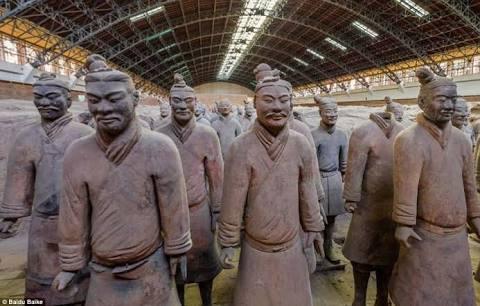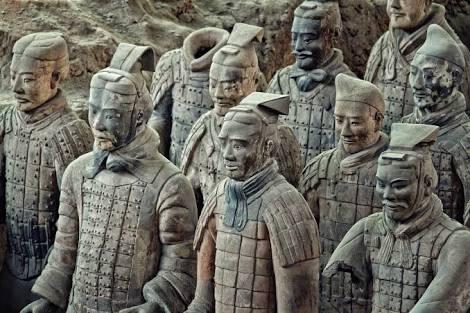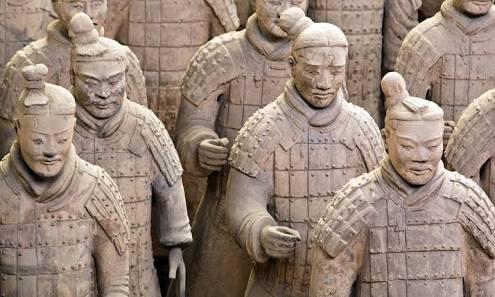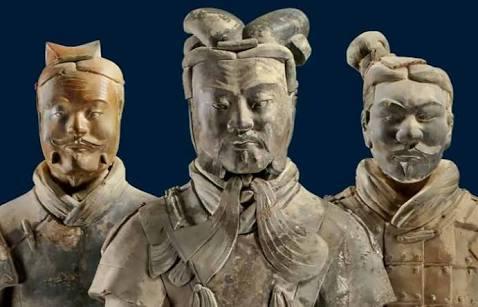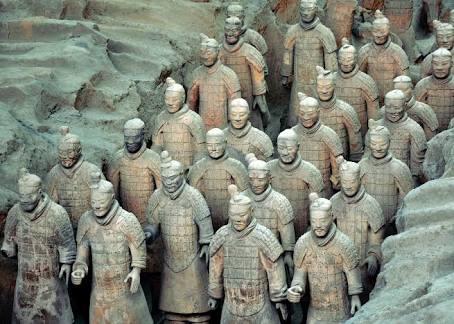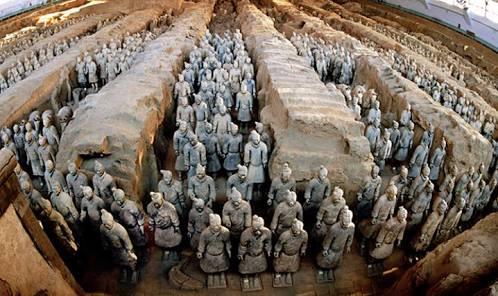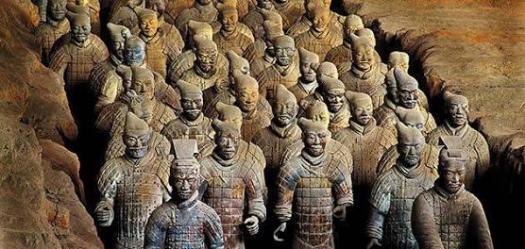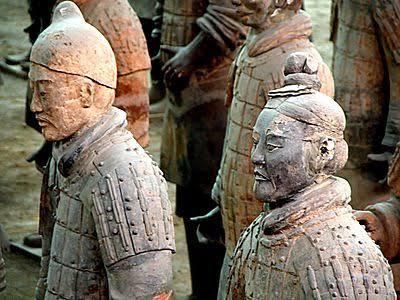What Do You Know About The Terracotta Army?

The sound terracotta bring to mind and art, edifice or beauty used in decorating a house, it’s a sculpture really, another part to it was an ancient Chinese army made with this sculpture, take a quiz to know more about the terracotta army
- 1.
The terracotta armies depict a collection of sculptures made of terracotta surrounding or guarding the first Chinese emperor grave, what is the first Chinese emperor name?
- A.
Jack Ma
- B.
Le Hap
- C.
John Wu
- D.
Qin Shi Huang
Correct Answer
D. Qin Shi HuangExplanation
The correct answer is Qin Shi Huang. The terracotta armies were created to surround and guard the grave of the first Chinese emperor, Qin Shi Huang.Rate this question:
-
- 2.
Upon completion, the terracotta figures were placed in a chasm in precise military formation according to their duty and?
- A.
Rank
- B.
Bravery
- C.
Position
- D.
None of the above
Correct Answer
A. RankExplanation
The terracotta figures were placed in a chasm in precise military formation according to their rank. This suggests that the figures were organized and arranged based on their hierarchical position within the military.Rate this question:
-
- 3.
The terracotta army was a form of funeral art buried the emperor and whose purpose was to protect the emperor in his afterlife, which time did this happen?
- A.
210 – 230BCE
- B.
230 – 240 BCE
- C.
200 – 250 BCE
- D.
210 – 209 BCE
Correct Answer
D. 210 – 209 BCEExplanation
The terracotta army was buried to protect the emperor in his afterlife. This event occurred between 210 – 209 BCE.Rate this question:
-
- 4.
The figures, dating from approximately the third century were discovered by local farmers in Lintong District, Xi’an Shaanxi province, which year was the terracotta discovered?
- A.
1980
- B.
1930
- C.
1974
- D.
1970
Correct Answer
C. 1974Explanation
In 1974, local farmers in Lintong District, Xi'an Shaanxi province discovered terracotta figures dating back to the third century.Rate this question:
-
- 5.
The figures include warriors, chariots, and horses, estimates from 2007 were that the three pits containing the Terracotta Army held more than?
- A.
6400 soldiers
- B.
3400 soldiers
- C.
5000 soldiers
- D.
8000 soldiers
Correct Answer
D. 8000 soldiersExplanation
The correct answer is 8000 soldiers. The Terracotta Army is a collection of clay sculptures depicting the armies of Qin Shi Huang, the first Emperor of China. The figures were discovered in 1974 and are believed to have been buried with the emperor to protect him in the afterlife. The army consists of warriors, chariots, and horses, and it is estimated that the three pits containing the Terracotta Army hold more than 8000 soldiers.Rate this question:
-
- 6.
Among the figures found in the pits were another group of terracotta non-military figures found in other pits, including officials, acrobats, strongmen and?
- A.
Porter
- B.
Musician
- C.
Sculptors
- D.
Artisans
Correct Answer
B. MusicianExplanation
The correct answer is Musician. The question states that among the figures found in the pits were another group of terracotta non-military figures, including officials, acrobats, strongmen, and musicians. This suggests that musicians were among the different types of non-military figures found in the pits.Rate this question:
-
- 7.
The most notable record of the construction of the tomb was described by a historian 145 – 90 BCE, in his most noted work Shiji, written a century after the mausoleum completion, what is the historian name?
- A.
John Wu
- B.
Sima Qian
- C.
Li Xit
- D.
Mao Han
Correct Answer
B. Sima QianExplanation
The correct answer is Sima Qian. Sima Qian was a historian who wrote the most noted work Shiji, which described the construction of the tomb. This work was written a century after the completion of the mausoleum, making Sima Qian the historian who provided the most notable record of the construction.Rate this question:
-
- 8.
According to an account, a thousand flowing rivers were simulated using mercury and above them, the ceiling was decorated with heavenly bodies below which were features of the?
- A.
Art
- B.
Background
- C.
Design
- D.
Land
Correct Answer
D. LandExplanation
The given account describes a simulation of a thousand flowing rivers using mercury, with a ceiling decorated with heavenly bodies above them. The question asks about the features below these heavenly bodies, indicating that the focus is on what lies beneath the rivers and the celestial decorations. Out of the options provided, "Land" is the most logical choice, as it represents the solid surface or terrain that would typically be found beneath bodies of water and above the ground.Rate this question:
-
- 9.
Historical accounts suggested that the tomb had been looted, a contender for the throne after the death of the first emperor, who looted the tomb?
- A.
Lee Xit
- B.
Xiang Yu
- C.
Xiang Yui
- D.
None of the above
Correct Answer
B. Xiang YuExplanation
The historical accounts suggest that the tomb had been looted, and Xiang Yu is believed to be the contender for the throne after the death of the first emperor who looted the tomb. Therefore, Xiang Yu is the most likely candidate who looted the tomb.Rate this question:
-
- 10.
This ancient terracotta army was discovered in the 19th century by farmers digging a water well approximately 1.5 kilometers east of the Qin Emperor tomb mound at?
- A.
Mount Jumong
- B.
Mount Mo Sum
- C.
Mount Ju Mo
- D.
Mount Li
Correct Answer
D. Mount LiExplanation
The correct answer is Mount Li. The ancient terracotta army was discovered by farmers who were digging a water well near Mount Li, which is located approximately 1.5 kilometers east of the Qin Emperor's tomb mound.Rate this question:
-
Quiz Review Timeline +
Our quizzes are rigorously reviewed, monitored and continuously updated by our expert board to maintain accuracy, relevance, and timeliness.
-
Current Version
-
Mar 21, 2023Quiz Edited by
ProProfs Editorial Team -
Nov 16, 2017Quiz Created by
Jaksiboy
 Back to top
Back to top



